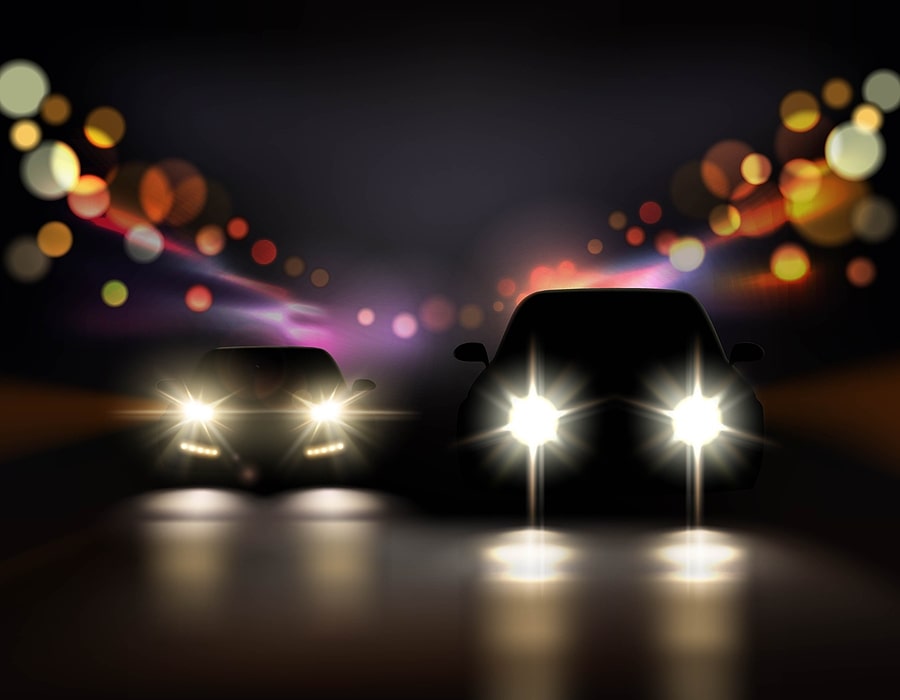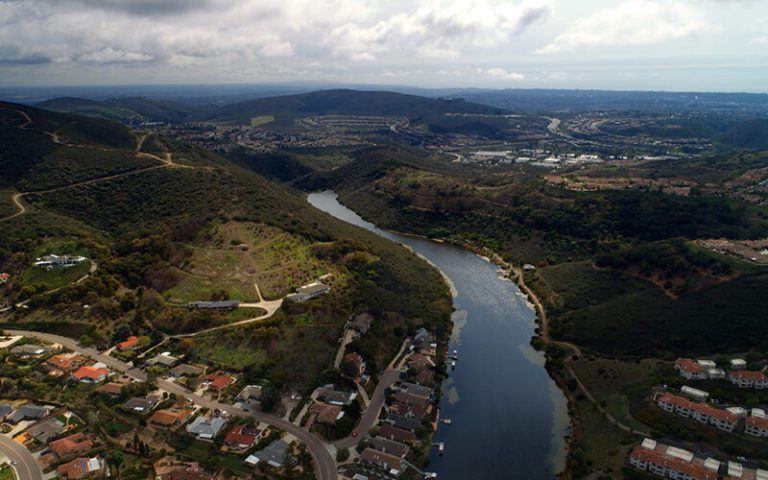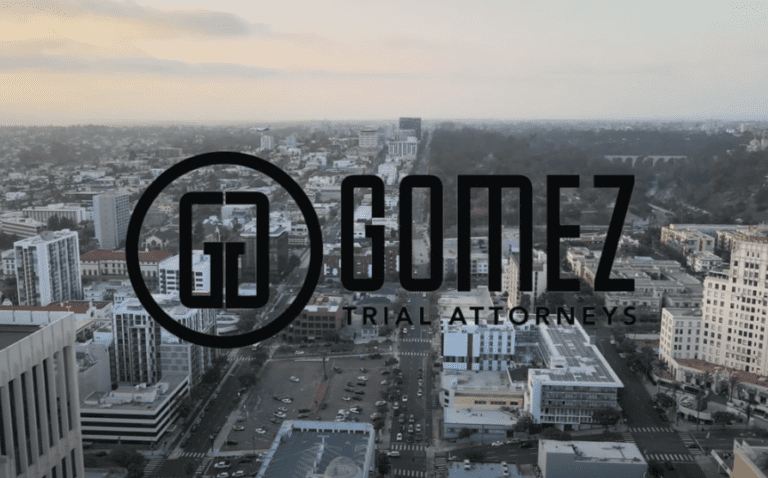
People rave about California’s long, sunny days, but the state enjoys equally lovely nights, with mild temperatures and plenty of places to eat, enjoy music, and spend time with family and friends, all within a short drive from each other. Night driving in California presents unique hazards, including heavy congestion in well-frequented nightspots and an increased risk of encountering intoxicated drivers. One set of hazards seldom gets mentioned, despite being a major cause of nighttime car accidents. Those hazards involve headlight issues.
If you have sustained injuries in an accident that resulted from a headlight problem on another vehicle—particularly if it violated California’s headlight laws—you can seek compensation for the expenses and impacts of your injury through a personal injury lawsuit. An experienced car accident lawyer in California can tell you about this process and answer your legal questions at a free, no-obligation case evaluation.
Dangers Involving Headlights on California Roadways
According to the National Safety Council, driving at night poses these dangers:
- Limited visibility. Even with high-beam headlights on, drivers can only see about 500 feet in front of them in the dark. Standard headlights only illuminate an area of about 250 feet. Most cars don’t have the necessary technology to allow the headlights to illuminate corners and curves, meaning that even in the best of circumstances, such as good weather and good eyes, the driver suffers from limited vision.
- Visual declines: A person’s night vision begins to decline by around the age of 30. A 50-year-old needs twice as much light to see at night as a 30-year-old, and certain issues, such as cataracts and degenerative eye diseases, create a progressively worsening ability to see clearly when driving at night.
- Fatigue: this+ affects not only drivers’ vision, but also their judgment, reasoning, and other skills needed for driving, similarly to the way alcohol impairment does.
While headlights aim to relieve some of these issues and help the driver to see in darkness or low-visibility conditions, the use of headlights can pose a hazard to other drivers, as they can cause temporary blindness and result in drivers departing their travel lane. On the other hand, driving without headlights limits the driver’s vision and how easily other drivers can see surrounding vehicles.
#1.Failing to Use Headlights
About half of all fatal motor vehicle accidents occur either at night or at dawn or dusk. California law requires all motor vehicles—except motorcycles—to have at least two headlights, one on either side of the front of the vehicle.
Drivers must use their headlights in darkness, as well as in inclement weather conditions that prevent the driver from clearly discerning a person or another motor vehicle from 1,000 feet away, or about 1/5 of a mile, or slightly more than 3 football fields.
If headlights enable you to see ahead and also allow other drivers to see you, why would someone fail to use headlights? The most common answers to that question include either because the brightness of the street lights provided sufficient light and caused the driver to forget about the headlines, or because the driver’s headlights suddenly went out.
#2. Diminished (Dim) Headlights
The strength of the headlights varies greatly between different vehicles and makes a big difference when it comes to the driver being able to see well enough to avoid an accident. The average driver requires about 1.5 seconds to react to an unexpected event, under ideal conditions (a clear, sunny day). When traveling at a speed of 55 miles per hour, a car will travel about 120 feet in 1.5 seconds. On average, drivers will need about 144 additional feet for the brakes to pull the vehicle to a complete stop. Dim headlights, particularly on the low beam setting, will result in drivers failing to see and respond to a hazard on the roadway until they can no longer avoid a collision.
#3. Using Foglamps or DRLs Instead of Headlights
As their name suggests, foglamps—also known as foglights—help drivers see and navigate the road during thick fog. Most drivers use their normal headlights in rainy conditions. However, main beam lights, such as headlights, actually make it harder to see in fog due to the light’s angle and intensity, which causes it to reflect off the moisture in the air. Car manufacturers position foglamps in such a way that they cut through the fog and assist the driver in seeing the roadway.
That said, drivers should only use their foglamps in fog. In clear, dark conditions, these lights can blind other drivers.
Likewise, some drivers opt to drive at night with their daytime running lights (DRLs) instead of headlights. Drivers should not do this, either, as these lights increase a car’s visibility to other drivers but don’t adequately illuminate the road enough for drivers to see well at night.
#4. Broken Headlights
Driving with a broken headlight violates California law, as you cannot operate a vehicle without two lighted headlamps. Additionally, having only one headlight cuts down on your ability to see the roadway and any obstacles that enter your path. In addition to having insufficient light, broken headlights can also result in the lights flashing unexpectedly, causing confusion for drivers or temporarily blinding them.
#5. HID Headlights
If you’ve seen a newer model vehicle that seemed to have uncomfortably bright headlights, then you’ve likely experienced the chief complaint with high-intensity headlights, commonly referred to as HID headlights. These headlights made their debut in certain luxury cars. Since then, many other manufacturers have followed suit.
These high-intensity headlights simulate daytime driving conditions. While good for drivers with this technology installed in their vehicles, these lights can pose a danger to drivers of vehicles in oncoming travel lanes. The California Highway Patrol points out that the state’s traffic code requires that all headlights exhibit white light.
Another problem with HID headlights, particularly those that the vehicle owner purchased as an aftermarket modification to a vehicle is that these lights often exhibit blue light instead of white light or shine too bright for use on the roadway. When used in lifted or lowered vehicles, drivers must abide by even more regulations regarding the use of HID headlights.
#6. Colorful Headlights
While some HID, LED, or Xenon headlights appear blue, they actually emit a really bright white light, which can appear blue in contrast to the yellowish tone of the headlights of older-model cars. However, California law prohibits the use of blue, green, red, or another color of bulbs, as does every other state in the nation. The reason for this prohibition of colorful headlights is because they do not usually emit enough light to assist the driver in driving at night.
#7. Parking on the Roadside With Bright Lights On
Vehicles parked on the roadside or in parking lots or private driveways with their bright headlights on also can cause accidents, as these headlights shine in the eyes of nearby drivers. In California, drivers can receive a ticket for having their bright lights on while parked, and the driver can even bear liability for injuries and property damage that result.
Who Bears Liability for a Headlight Accident?
Determining fault in any type of accident can prove difficult without knowing the specific details of the accident. Most motor vehicle accidents result from multiple factors. However, generally speaking—if the accident resulted solely from an issue with the headlights on one of the vehicles involved, liability rests with the driver of that vehicle, as that driver bears responsibility for ensuring that his or her vehicle remains in proper, working order and under state and local traffic laws.
Likewise, in a state that follows a pure comparative fault system, if you sustained injuries in an accident because someone’s headlights temporarily blinded you and caused you to drift from your travel lane in that instant and strike another vehicle, you likely have a valid argument that the headlights of the initial car caused the accident, and thus, that driver bears liability.
#1. Why It Matters
California is a liability state in terms of automobile insurance. Accordingly, drivers must purchase liability insurance that will cover injuries and property damage to other people in accidents that the insured drivers cause. If you can’t prove that the driver with the headlight issue caused the accident, that driver’s liability insurance will not cover these costs.
#2. Proving Fault in a California Headlight Accident
Headlight issues generally involve negligence, meaning the driver did not create the issue to cause an accident that injured others. Rather, headlight accidents typically reveal a lack of maintenance or a failure to obey the laws.
You can prove negligence by establishing the following elements in your case:
- The at-fault party owed you a duty of care. The duty of care simply refers to the actions that a reasonable driver would take to protect the safety and property of others. For example, reasonable drivers would want to obey traffic laws with their use of headlights to ensure that they can see others on the roadway and that other roadway users can see them.
- The at-fault party breached the duty of care. The at-fault driver took an action that contradicted obeying California headlight laws or negatively affected the ability to see or be seen by others when driving.
- The breach resulted in a headlight accident in which you sustained injuries. Those injuries resulted in expenses and affected you.
#3. Can Someone Else Bear Liability?
Not every accident results from the actions of one of the drivers, or even a combination of fault between drivers. This holds in all types of accidents, including headlight accidents. Manufacturers and distributors of headlights and vehicles can also bear liability if the accident resulted from a defective headlight.
We call this type of case a product liability case, and it involves proving that one of the following three defects existed in the headlights on the vehicle:
- A design defect, which would occur during the headlight’s engineering and would generally involve that entire particular model of headlights having the same defect.
- A manufacturing defect, which occurs during the process of manufacturing the lights or wiring them into the vehicle.
- A packaging defect, which would occur if the manufacturer’s instructions failed to list known and unreasonable risks faced by consumers who use the product as directed.
California Accident Caused by Headlight (Mis)use? We Can Help
Headlight accident cases involve an extra bit of investigative work to prove, which serves as one important reason to hire a legal team with experience in this type of case. Fortunately, California has many lawyers that stand ready and willing to take on these types of cases.
When exploring your options, select an attorney who understands state motor vehicle laws, treats injured individuals with compassion, and has experience negotiating favorable settlements and litigating cases all the way to trial. You don’t want your case to represent your attorney’s first foray. Instead, you want an attorney with significant experience and a successful track record.
An attorney will learn more about the details of your case, answer your legal questions, and explore your options for compensation through a free, no-obligation case evaluation. To schedule a free case evaluation, contact an experienced attorney. During your free case evaluation, you can discuss the details of your accident, ask questions about your legal options, and determine your eligibility to pursue compensation for the full cost of your injuries.
You won’t have to retain the attorney with whom you talk following your evaluation if you choose not to, but you can learn more about your rights and options and determine your best course forward. Accordingly, you risk nothing by contacting an attorney and having that initial chat. Don’t hesitate; reach out today to an attorney with experience handling these types of cases.







